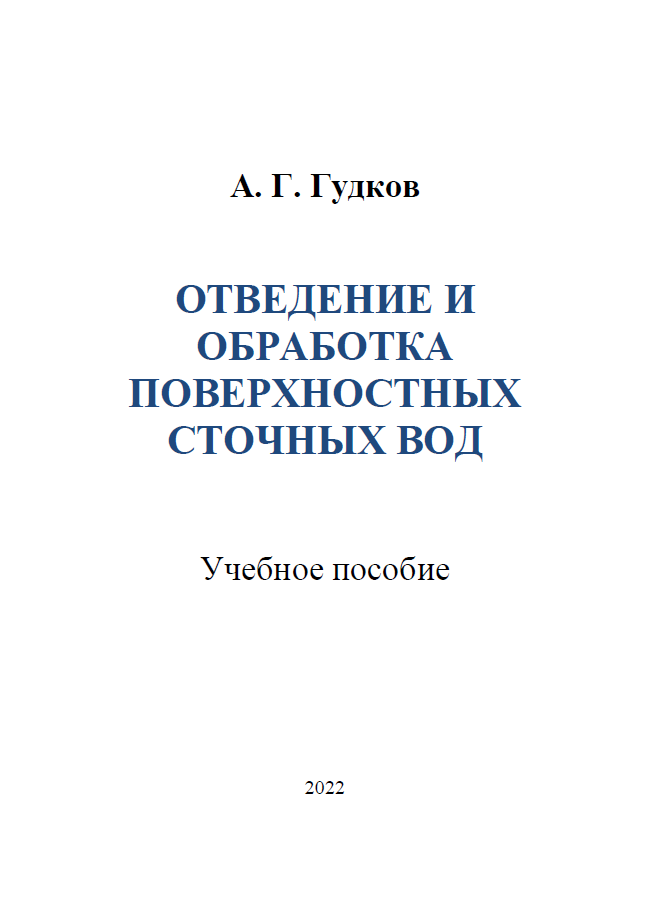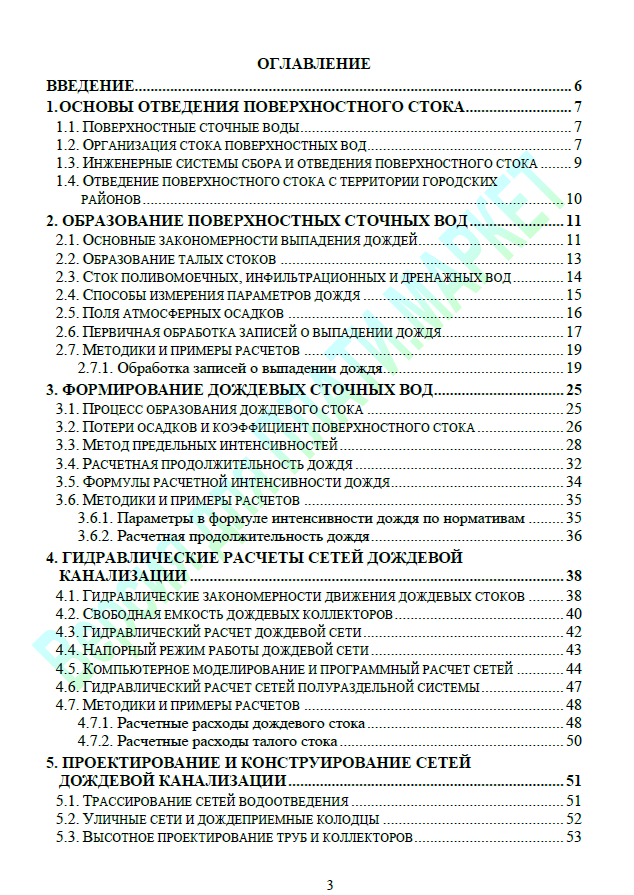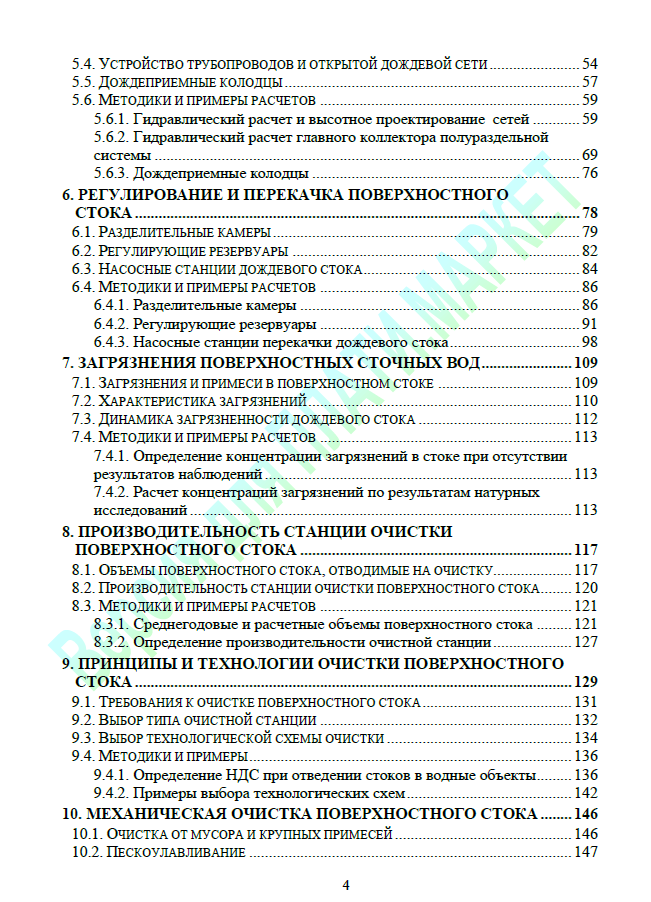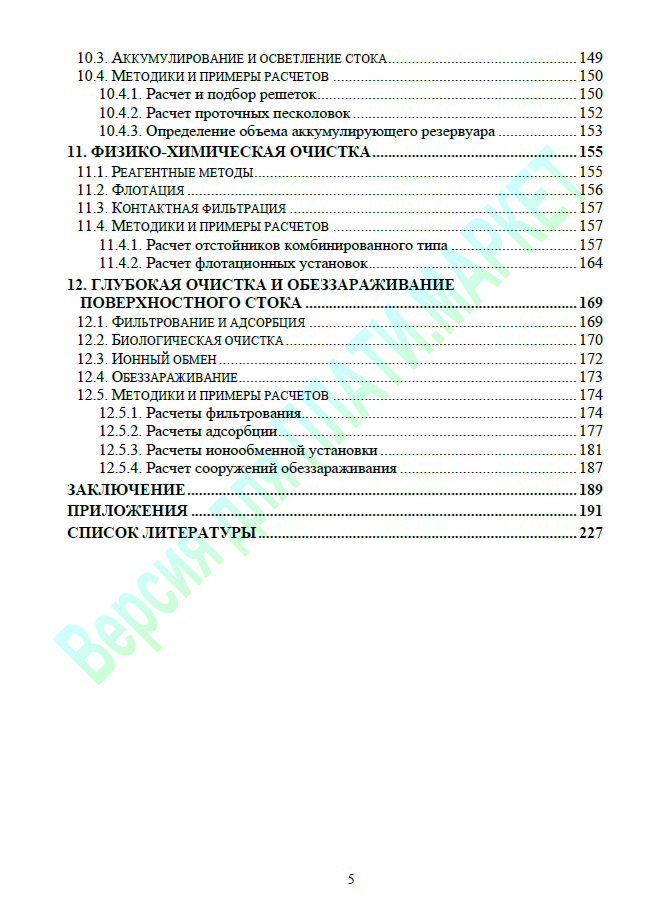- Arts & Culture 5941
- Business & Economics 689
- Computers 319
- Dictionaries & Encyclopedias 81
- Education & Science 75890
- Abstracts 252
- Astrology 4
- Astronomy 1
- Biology 8
- Chemistry 2221
- Coursework 15546
- Culture 9
- Diplomas 411
- Drawings 574
- Ecology 6
- Economy 83
- English 75
- Ethics, Aesthetics 3
- For Education Students 17613
- Foreign Languages 11
- Geography 3
- Geology 1
- History 89
- Maps & Atlases 5
- Mathematics 13856
- Musical Literature 2
- Pedagogics 19
- Philosophy 23
- Physics 14865
- Political Science 5
- Practical Work 101
- Psychology 60
- Religion 4
- Russian and culture of speech 8
- School Textbooks 7
- Sexology 42
- Sociology 9
- Summaries, Cribs 87
- Test Answers 150
- Tests 9243
- Textbooks for Colleges and Universities 32
- Theses 24
- To Help Graduate Students 14
- To Help the Entrant 37
- Vetting 364
- Works 13
- Информатика 10
- Engineering 3063
- Fiction 696
- House, Family & Entertainment 107
- Law 132
- Website Promotion 71
Drainage and treatment of runoff wastewater
Content: otw_obr_pow_sw_2021_plati.pdf 6954,42 kB
Product description
A. G. Gudkov. Drainage and treatment of runoff wastewater: a textbook.- 230 p.
The textbook outlines the principles of the device of systems for collecting, diverting and cleaning surface runoff from residential areas and industrial sites.
The principles of operation, arrangement and design of underground networks, regulating reservoirs, rain wells, separation chambers, pumping stations designed to divert surface runoff are given. The manual contains detailed instructions on the selection of technological schemes for cleaning, calculation and design of structures and installations designed for the treatment of rain and meltwater.
The manual is intended for students studying in the direction of higher education "Construction", as well as graduate students and engineering and technical specialists.
Additional information
Content:
Introduction
1. Fundamentals of surface runoff drainage
1.1. Surface wastewater
1.2. Organization of surface water runoff
1.3. Engineering systems for collecting and diverting surface runoff
1.4. Diversion of surface runoff from urban areas
2. Formation of surface wastewater
2.1. The main patterns of rainfall
2.2. Formation of meltwater runoff
2.3. Flow of irrigation, infiltration and drainage waters
2.4. Methods of measuring rain parameters
2.5. Precipitation fields
2.6. Primary processing of rain records
2.7. Methods and examples of calculations
3. Formation of rainwater wastewater
3.1. The process of rain runoff formation
3.2. Precipitation losses and surface runoff coefficient
3.3. The method of limiting intensities
3.4. Estimated duration of rain
3.5. Formulas for calculated rain intensity
3.6. Methods and examples of calculations
4. Hydraulic calculations of rainwater drainage networks
4.1. Hydraulic patterns of rainwater runoff movement
4.2. Free capacity of rain collectors
4.3. Hydraulic calculation of the rain network
4.4. Pressure mode of operation of the rain network
4.5. Computer modeling and software calculation of networks
4.6. Hydraulic calculation of semi-split system networks
4.7. Methods and examples of calculations
5. Design and construction of rain sewer networks
5.1. Tracing of drainage networks
5.2. Street networks and rain wells
5.3. High-rise design of pipes and collectors
5.4. Installation of pipelines and open rain network
5.5. Rain wells
5.6. Methods and examples of calculations
6. Regulation and pumping of surface runoff
6.1. Separation chambers
6.2. Regulating tanks
6.3. Rainwater pumping stations
6.4. Methods and examples of calculations
7. Contamination of surface wastewater
7.1. Contamination and impurities in surface runoff
7.2. Characteristics of pollution
7.3. Dynamics of rain runoff pollution
7.4. Methods and examples of calculations
8. Performance of the surface runoff treatment plant
8.1. Volumes of surface runoff diverted for cleaning
8.2. Performance of the surface runoff treatment plant
8.3. Methods and examples of calculations
9. Principles and technologies of surface runoff treatment
9.1. Requirements for surface runoff cleaning
9.2. Selection of the type of treatment plant
9.3. Selection of the technological scheme of cleaning
9.4. Methods and examples
10. Mechanical cleaning of surface runoff
10.1. Cleaning of debris and large impurities
10.2. Sand collection
10.3. Accumulation and clarification of the drain
10.4. Methods and examples of calculations
11. Physical and chemical cleaning
11.1. Reagent methods
11.2. Flotation
11.3. Contact filtration
11.4. Methods and examples of calculations
12. Deep cleaning and disinfection of surface runoff
12.1. Filtration and adsorption
12.2. Biological purification
12.3. Ion exchange
12.4. Disinfection
12.5. Methods and examples of calculations
Conclusion
Applications
References




